
The Narrow Margin is a 1952 American film noir starring Charles McGraw and Marie Windsor. Directed by Richard Fleischer, the RKO picture was written by Earl Felton, based on an unpublished story written by Martin Goldsmith and Jack Leonard. The screenplay by Earl Felton was nominated for an Academy Award.
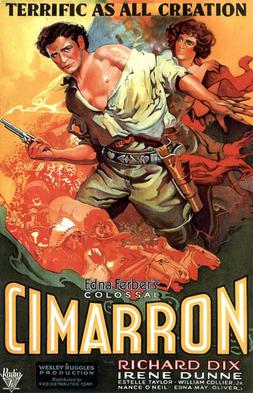
Cimarron is a 1931 pre-Code epic Western film starring Richard Dix and Irene Dunne, and directed by Wesley Ruggles. Released by RKO, it won Academy Awards for Best Picture, Best Adapted Screenplay, and Best Production Design.

The Bachelor and the Bobby-Soxer is a 1947 American screwball romantic comedy-drama film directed by Irving Reis and written by Sidney Sheldon. The film stars Cary Grant, Myrna Loy and Shirley Temple in a story about a teenager's crush on an older man.

"The Screwfly Solution" is the seventh episode in the second season of Masters of Horror. It is based upon the 1977 science fiction short story of the same name by Alice Sheldon, credited in the film as James Tiptree, Jr. Many of the scenes in Sam Hamm's script are expansions of single lines in this epistolary story. Director Joe Dante read the story in the 1980s and had wanted to make a film version ever since. He presented the story as straight horror, eschewing his usual humor and without using his usual company of stock actors. Jason Priestley and Elliott Gould star.
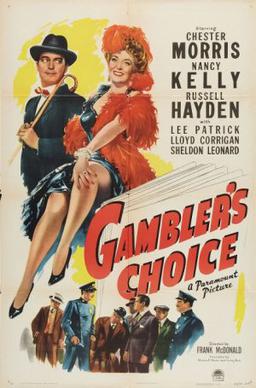
Gambler's Choice is a 1944 film directed by Frank McDonald and starring Chester Morris and Nancy Kelly.

Texas Lady is a 1955 color American Western film directed by Tim Whelan in his final film before his death in 1957, and distributed by RKO Radio Pictures. It stars Claudette Colbert, Barry Sullivan and Ray Collins. The film tells the story of a female publisher who encounters injustice and violence in a Southern town.
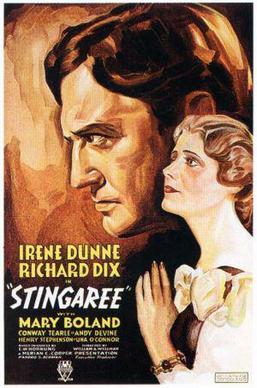
Stingaree is an American pre-Code romantic drama film directed by William A. Wellman released by RKO Radio Pictures in 1934. The film was based on a 1905 novel by Ernest William Hornung. Set in Australia, it stars Irene Dunne as Hilda Bouverie and Richard Dix as Stingaree. Hollywood had previously filmed the Hornung story as serials in 1915 and 1917, starring True Boardman.

Night Song is a 1948 American drama film directed by John Cromwell and starring Dana Andrews, Merle Oberon and Ethel Barrymore.
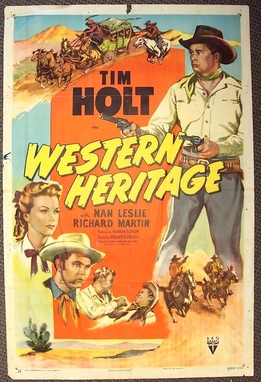
Western Heritage is a 1948 American Western film directed by Wallace Grissell. The film is a Tim Holt B Western about land robbers and forgers in the southwest.

Girl of the Rio is a 1932 American pre-Code RKO musical film starred Dolores del Río and Leo Carrillo. Directed by Herbert Brenon, the screenplay was written by Elizabeth Meehan and Louis Stevens, based on the play, The Dove by Willard Mack, which was itself based on a magazine article by Gerald Beaumont. The film is a remake of the 1927 silent film, The Dove, starring Norma Talmadge.

Ace of Aces, also known as Bird of Prey, is a 1933 American pre-Code war film based on the story "The Bird of Prey" by World War I pilot John Monk Saunders that explores how war can turn a man's moral compass from pacifism to warmonger. Starring Richard Dix, it was similar to many of the period films that appeared to glorify the "knights of the air", but was more complex, examining the motivations of those who choose to go to war.
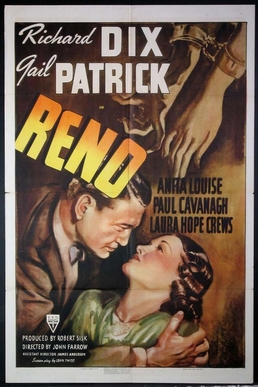
Reno is a 1939 American drama film directed by John Farrow and starring Richard Dix, Gail Patrick and Anita Louise.
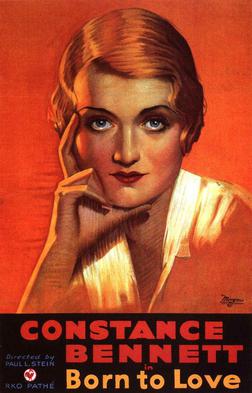
Born to Love is a 1931 American pre-Code melodrama film, directed by Paul L. Stein from an original screenplay by Ernest Pascal. It starred Constance Bennett, Joel McCrea and Paul Cavanagh in a lovers' triangle set in London during World War I. It was only the second film produced by RKO Pathé after the merger of the two studios, and according to RKO records, it made a profit of $90,000.

Dance Hall is a 1929 American pre-Code musical film directed by Melville Brown and written by Jane Murfin and J. Walter Ruben, based on the short story of the same name by Vina Delmar. The film centers a love triangle with a shipping clerk competing with a dashing aviator for the affections of a young taxi dancer. It was Radio Pictures' second to last release of the decade, and was a critical and financial flop.

Beau Bandit is a 1930 American Pre-Code Western film, directed by Lambert Hillyer, from a screenplay by Wallace Smith, based on his short story, "Strictly Business" which appeared in the April 1929 edition of Hearst's International-Cosmopolitan. The film starred Rod La Rocque, Mitchell Lewis, Doris Kenyon, and Walter Long. The story is based loosely on the legend of Robin Hood.

Secret Service is a 1931 American Pre-Code drama film directed by J. Walter Ruben and written by Bernard Schubert. The film based on a play by William Gillette, stars Richard Dix, William Post Jr., Shirley Grey, and Nance O'Neil. The film was released on November 14, 1931, by RKO Pictures.

The Great Jasper is a 1933 American pre-Code drama film directed by J. Walter Ruben and written by H.W. Hanemann and Samuel Ornitz. The film stars Richard Dix, Edna May Oliver, Florence Eldridge, Wera Engels and Walter Walker. The film was released on February 17, 1933, by RKO Pictures.
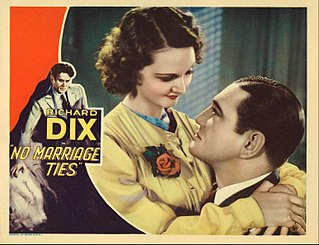
No Marriage Ties is a 1933 American pre-Code drama film directed by J. Walter Ruben and written by Arthur Caesar, H.W. Hanemann, Sam Mintz. The film stars Richard Dix, Elizabeth Allan, Doris Kenyon, Alan Dinehart and David Landau. The film was released on August 8, 1933, by RKO Pictures.

The Arizonian is a 1935 American Western film directed by Charles Vidor and starring Richard Dix, Margot Grahame, Preston Foster, and Louis Calhern. The screenplay was by Dudley Nichols. The film was released by RKO Radio Pictures on June 28, 1935.
Code of the Streets is a 1939 Universal Studios film starring The Little Tough Guys.



















